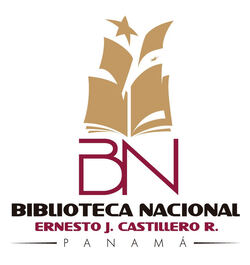The content of the publications and the links suggested in them are the sole responsibility of the authors and not of the Metropolitan University of Education, Science and Technology (UMECIT) or of the journal ORATORES. They are protected by international copyright laws as well as the logos of UMECIT AND ORATORES, hence their reproduction is totally prohibited.
This work is licensed under a Creative Commons Attribution-NonCommercial-NoDerivatives 4.0 International License.
The authors maintain the copyright and transfer the right of the first publication to the journal, with the article registered with Creative Commons Attribution-NonCommercial-NoDerivatives License, which allow others They can download the works published in this magazine and share them with other people, as long as their authorship is recognized, but they cannot be changed in any way nor can they be used commercially.
Authors are recommended to include their work in social networks such as Researchgate and institutional repositories once the article or visible fact has been published on the journal page, without forgetting to include the digital document identifier and the name of the journal.



Abstract
In the study of differential and integral calculus and especially in real analysis, Dini derivatives are a type of generalization of derivatives, introduced by Ulisse Dini (1845 – 1918), to study continuous functions that are not differentiable. In this work, the definition of the four Dini derivatives is presented and their most important properties are given. Monotone functions are also characterized by the sign of their four Dini derivatives and it is proved that the set of points where the function is not differentiable has measure zero. Finally, a version of the fundamental theorem of calculus is presented, but now using the Dini derivative.
Keywords
References
Dunham,(2018). The Calculus: Gallery Masterpieces from Newton to Lebesgue. Princeton University Press. U.S.A.
Edward, C.H. 1994. The Historical Development of the Calculus. Springer-Verlag. USA.
Folland, G. B. 2007. Real Analysis: Modern Techniques and Their Applications. Wiley. USA.
Gelbaum, B. R. and Olmsted, J.M.H. 2003. Counterexamples in Analysis. Dover Publications, Inc. USA.
Gordon, R.A. (2002). Real Analysis. A first Course. Addison Wesley. USA.
Kharazishvily, A. (2018). Strange Functions in Real Analysis. CRC Press Taylor & Francis Group. USA.
Natanson, I. R. 2016. Theory of Functions of Real Variable. Volume I. Dover Publications, Inc. USA.
Orchinnikov, S. 2013. Measure, Integral, Derivative: A Course on Lebesgue’s Theory. Springer-Verlag. USA.
Van Rooij, A.C.M. and Schikhof, W.H. (1982). A second Course on Real Functions. Cambridge University Press. USA.
Downloads
Publication Facts
Reviewer profiles N/A
Author statements
- Academic society
- Universidad Metropolitana de Educación, Ciencia y Tecnología
- Publisher
- Universidad Metropolitana de Educación, Ciencia y Tecnología



















